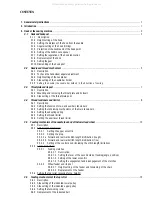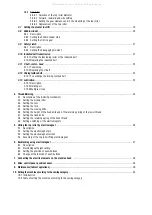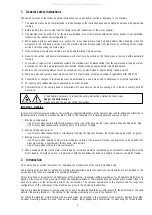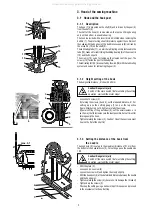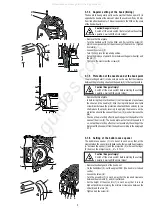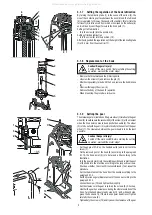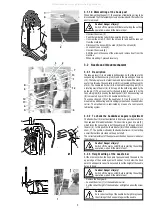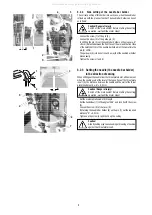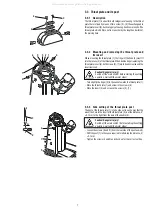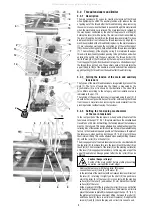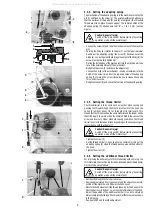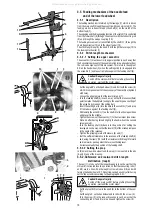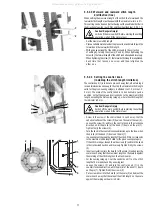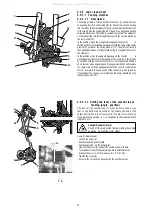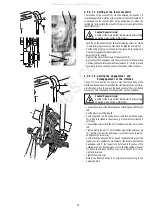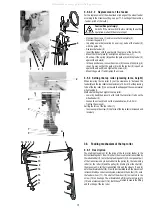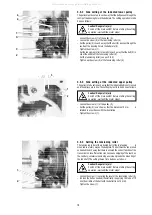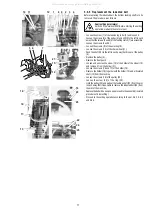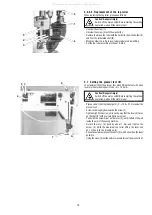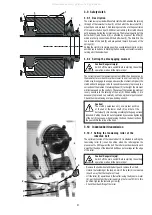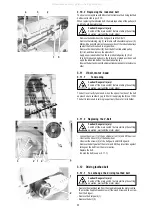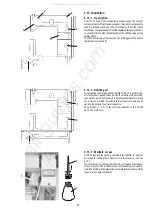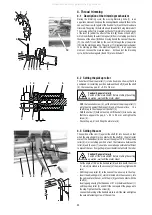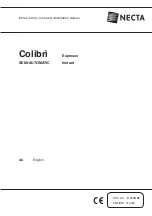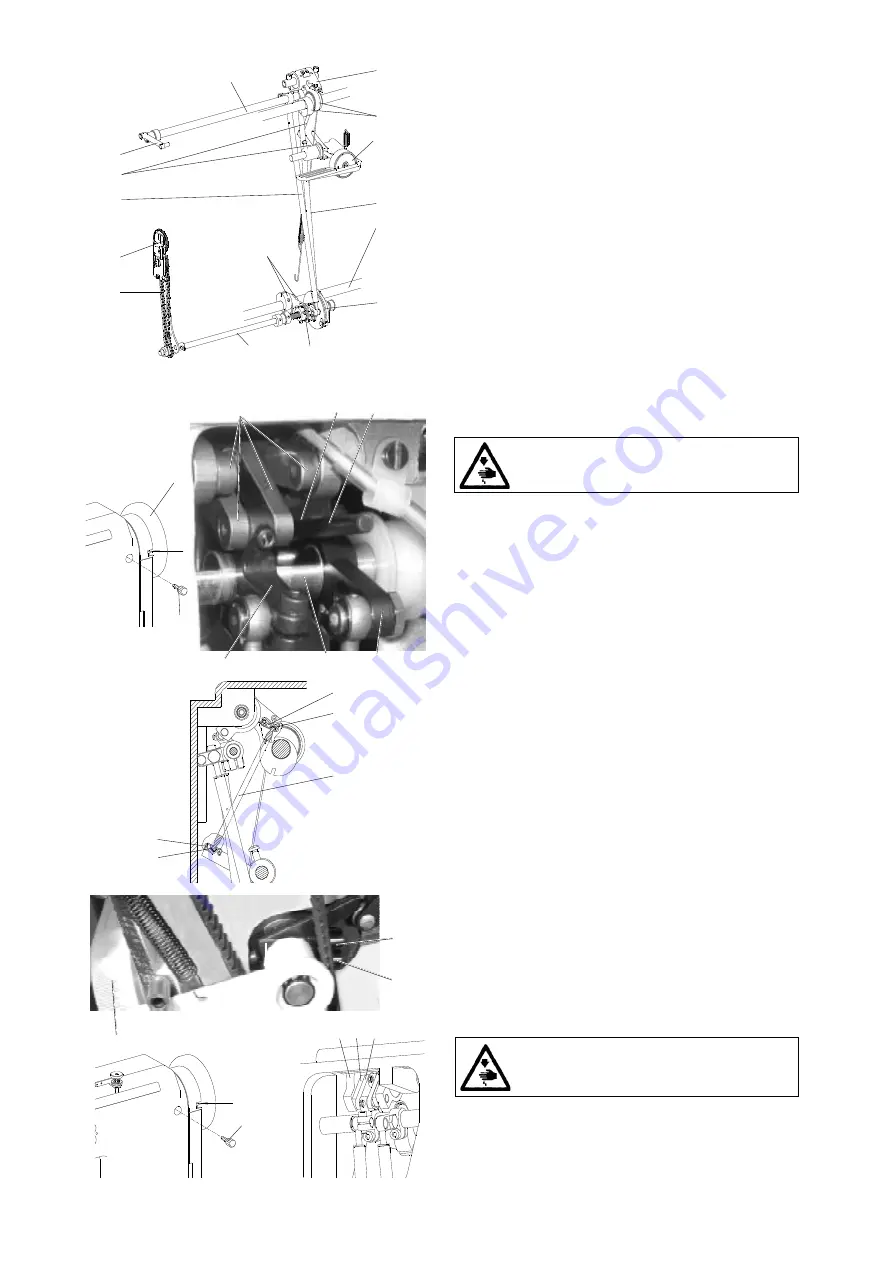
10
C
D
A
B
1
4
0
o
6 7 8
1
9
3
2
5
2
90
o
6
10
1
4
3
7
15
4
5
13
12
14
11
10
6
8
7
2
1
9
3
3.5 Feeding mechanism of the needle feed
and of the lower feed wheel
3.5.1 Description
The feeding mechanism is formed by the leverage (1) which is driven
from the main shaft through the eccentric with connection rod (2). The
feeding motion is transmitted by the shaft (3) on the clutch of the
bottom feed (7).
The engaging and the disengaging function of the clutch (7) is controlled
from the lower shaft (8) through the eccentric with the connecting rod
(9) and through the wedge coupling (10).
The feeding movement is transmitted by the shaft (11) through the
chain transmission (12) onto the wheel feeder (13).
The stitch length is set by the knob (14) through the leverage (15) to
the feeding mechanism (1).
3.5.2 Stitch length mechanism
3.5.2.1 Setting the upper eccentric
The eccentric (1) must be set in its angular position in such a way that
the horizontal component of the needle motion is in a phase delay from
the vertical component of this movement. This refers to the angle of
90
°
on the handwheel (2), when the setting stick (3) is engaged into
the eccentric (1) and leans from above against the feeding shaft (4).
Caution! Danger of injury!
Switch off the main switch! Before starting the setting
operation, wait until the motor stops!
-
Set the angle 90
°
on the handwheel (2) and fix it with the screw (5)
which is component part of the accessory of the machine (tighten it
with care).
- Loosen the gripping joints of the levers (6) and (7).
- Turn the feeding shaft (4) in such a way, so that the recesses (flats)
point towards the bedplate (owing to the unambi-guous setting of
the eccentric by means of the setting bar).
- Insert the setting bar (3) into the hole in the eccentric (1) and prop
it from above against the feeding shaft (4).
- Shift axially the eccentric (1) on the shaft into its extreme positions
and place it in the middle.
- Tighten the screws of the eccentric (1) to the maximum (one screw
first and, after having turned slightly the hand-wheel, the second
screw as well).
- Turn the feeding shaft (4) back into the position for setting the
leverage in such a way, so that the levers (10) of the mechanism pass
in the spots of the recesses.
- Tighten the gripping joints of the levers (6) and (7).
- Test the sufficient clearance in the recesses of the feeding shaft (4)
and, using the levers (10) with the maximum stitch length forward
and rearward push against the reverse stitching lever.
- Correct eventually the position of the feeding shaft.
3.5.2.2
Setting the prop
In this machine with a wheel feed, the prop (1) is mounted in the pits
(A and C) as per the drawing.
3.5.2.3a
Forward and rearward stitch length
distribution (rough)
The cam (1) is to be set at the respective angle in such a way that the
stirrup (6) is oriented in such a position, so that the connecting rods (7
and 8) are in a line with a thoroughly screwed in knob (9) and with
turning the handwheel at 0
°
. This setting can be done only after having
set the top eccentric according to the paragraph 3.5.2.1.
Caution! Danger of injury!
Switch off the main switch! Before starting the setting
operation, wait until the motor stops!
- Set the zero stitch /screw in the knob (9) to the bottom of the cam
(1)/.
- Set the angle 0
°
on the handwheel and lock it with the screw (4).
- Turn the screw (3) in the respective sense in such a way that the
connecting rods (7 and 8) are in a line and tighten the screw (2).
All manuals and user guides at all-guides.com


